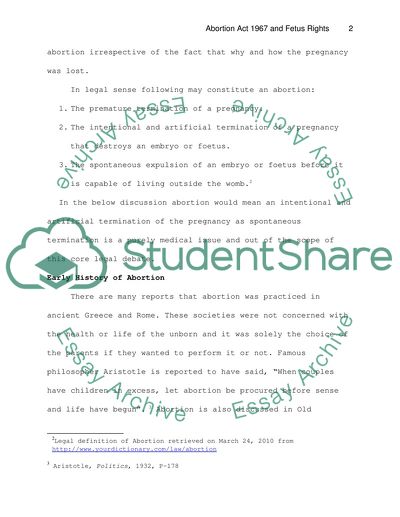Cite this document
(The Abortion Act 1967 and The Human Rights of The Fetus Research Paper, n.d.)
The Abortion Act 1967 and The Human Rights of The Fetus Research Paper. Retrieved from https://studentshare.org/law/1735070-does-the-abortion-act-1967-provide-sufficient-protection-for-the-human-rights-of-the-foetus
The Abortion Act 1967 and The Human Rights of The Fetus Research Paper. Retrieved from https://studentshare.org/law/1735070-does-the-abortion-act-1967-provide-sufficient-protection-for-the-human-rights-of-the-foetus
(The Abortion Act 1967 and The Human Rights of The Fetus Research Paper)
The Abortion Act 1967 and The Human Rights of The Fetus Research Paper. https://studentshare.org/law/1735070-does-the-abortion-act-1967-provide-sufficient-protection-for-the-human-rights-of-the-foetus.
The Abortion Act 1967 and The Human Rights of The Fetus Research Paper. https://studentshare.org/law/1735070-does-the-abortion-act-1967-provide-sufficient-protection-for-the-human-rights-of-the-foetus.
“The Abortion Act 1967 and The Human Rights of The Fetus Research Paper”, n.d. https://studentshare.org/law/1735070-does-the-abortion-act-1967-provide-sufficient-protection-for-the-human-rights-of-the-foetus.


